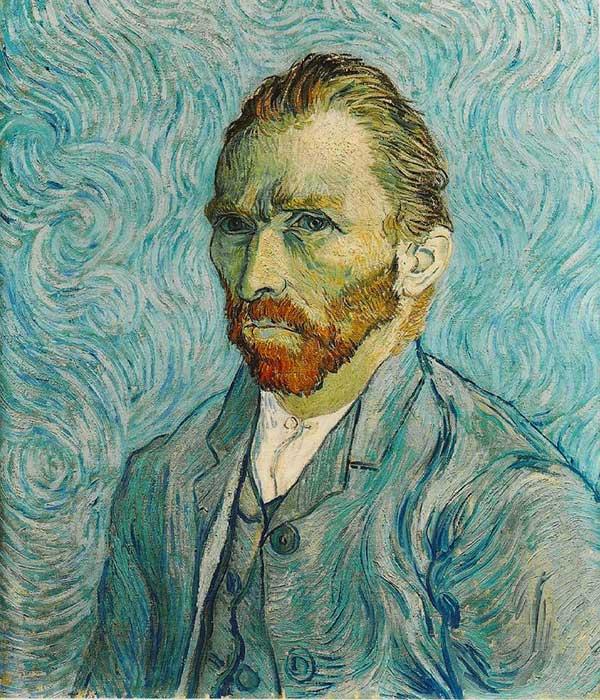Today's Birthday
Vincent Van GoghPronunciation: [van gO, Dutch vinsent´ vän khôkh]
1853–90, postimpressionist painter, born in the Netherlands.
Van Gogh's works are perhaps better known generally than those of any other painter. His brief, turbulent, and tragic life is thought to epitomize the mad genius legend.
During his lifetime, Van Gogh's work was represented in two very small exhibitions and two larger ones. Only one of Van Gogh's paintings was sold while he lived. The great majority of the works by which he is remembered were produced in 29 months of frenzied activity and intermittent bouts with epileptoid seizures and profound despair that finally ended in suicide. In his grim struggle Vincent had one constant ally and support, his younger brother Théo, to whom he wrote revealing and extraordinarily beautiful letters detailing his conflicts and aspirations. As a youth Van Gogh worked for a picture dealer, antagonizing customers until he was dismissed. Compulsively humanitarian, he tried to preach to oppressed mining families and was jeered at. His difficult, contradictory personality was rejected by the women he fell in love with, and his few friendships usually ended in bitter arguments.
Ten years before his death Van Gogh decided to be a painter, fully conscious of the sacrifices this decision would require of him. His early work, the Dutch period of 1880–85, consists of dark greenish-brown, heavily painted studies of peasants and miners, e.g., The Potato Eaters (1885; Van Gogh Mus., Amsterdam). He copied the work of Millet, whose idealization of the rural poor he admired. In 1886 he joined Théo in Paris, where he met the foremost French painters of the postimpressionist period. The kindly Pissarro convinced him to adopt a colorful palette and thereby made a tremendously significant contribution to Van Gogh's art. His painting Père Tanguy (1887; Niarchos Coll., Paris) was the first complete and successful work in his new colors. Impressed by the theories of Seurat and Signac, Van Gogh briefly adopted a pointillist style.
In 1888, in ill health and longing for release from Paris and what he felt was his imposition upon Théo's life, he took a house at Arles. At Arles he was joined by Gauguin for a brief period fraught with tension, during which he mutilated his left ear in the course of his first attack of dementia. His paintings from this period include the incomparable series of sunflowers (1888; one version: National Gall., London); The Night Café (Yale Univ.); and The Public Gardens in Arles (Phillips Coll., Washington, D.C.). During his illness he was confined first to the Arles Hospital, then to the asylum at Saint-Rémy, where, in 1889, he painted the swirling, climactic Starry Night (Mus. of Modern Art, New York City).
Van Gogh's last three months were spent in Auvers near Pissarro, painting the postman Roulin and the sympathetic, eccentric Dr. Gachet, a physician and collector who watched over him. Vincent's consciousness of his burden upon Théo, by then married and a father, increased. His work tempo was pushed to the limit; one of his last paintings, Wheat Field With Crows (Van Gogh Foundation, Amsterdam), projected ominous overtones of distress. He despaired and shot himself, dying two days later in the arms of his brother. Théo died shortly thereafter.
Bibliography:
See his works ed. by J. B. de la Faille (rev. ed. 1970); his Complete Letters (tr. 1958); studies by J. Leymarie (1968), M. E. Tralbaut (1969), R. J. Philpott (1984), and Ronald Pickvance (1984).
Who2. Copyright © 1998-2006 by Who2?, LLC. All rights reserved.
Also Born on March 30
- MaimonidesJewish scholar (1135)
- Francisco Goyaartist (1746)
- Anna Sewellauthor of Black Beauty (1820)
- Paul Verlainepoet (1844)
- Sean O'Casey,dramatist (1884)
- Warren Beattydirector, actor, producer (1937)
- Celine Dionsinger (1968)
Who Shares Your Birthday?
The Day You Were Born
The Year You Were Born











